BY ALEJANDRO BURITICA
Senior Product Marketing Manager — RF
National Instruments
www.ni.com
Editor’s note: To gain an understanding of the fundamental differences between the established 802.11ac wireless communication standard and the new 802.11ax so as to perform testing on the bench and in the field, the author began the series last month with Part 1, a general overview of the changes and, in particular, those at the PHY layer. In Part 2, we examine the new standard’s dual modes of operation (MU-MIMO and OFDMA) and aspects of multi-user operation.
Multi-user operation: MU-MIMO and OFDMA
The 802.11ax standard has two modes of operation:
a. Single-user: In this sequential mode, the wireless stations (STAs) send and receive data one at a time once they secure access to the medium.
b. Multi-user: This mode allows for the simultaneous operation of multiple non-access-point (AP) STAs. The standard divides this mode further into downlink and uplink multi-user.
- Downlink multi-user refers to data that the AP serves to multiple associated wireless STAs at the same time. The existing 802.11ac standard also includes this functionality.
- Uplink multi-user involves simultaneous transmission of data from multiple STAs to the AP. This is a new functionality of the 802.11ax standard, which did not exist in any of the previous versions of the Wi-Fi standard.
Under the multi-user mode of operation, the standard also specifies two ways to multiplex more users within a certain area: Multi-User MIMO and Orthogonal Frequency-Division Multiple Access (OFDMA). For both of these methods, the AP acts as the central controller of all aspects of multi-user operation, similar to how an LTE cellular base station controls the multiplexing of many users. An 802.11ax AP can also combine MU-MIMO with OFDMA operation.
Multi-user MIMO
Borrowing from the 802.11ac implementation, 802.11ax devices will use beamforming techniques to direct packets simultaneously to spatially diverse users (Fig. 1 ). That is, the AP will calculate a channel matrix for each user and steer simultaneous beams to different users — each beam containing specific packets for its target user. 802.11ax might support sending up to eight multi-user MIMO transmissions at a time, up from four for 802.11ac. Also, each MU-MIMO transmission may have its own modulation and coding set (MCS) and a different number of spatial streams.
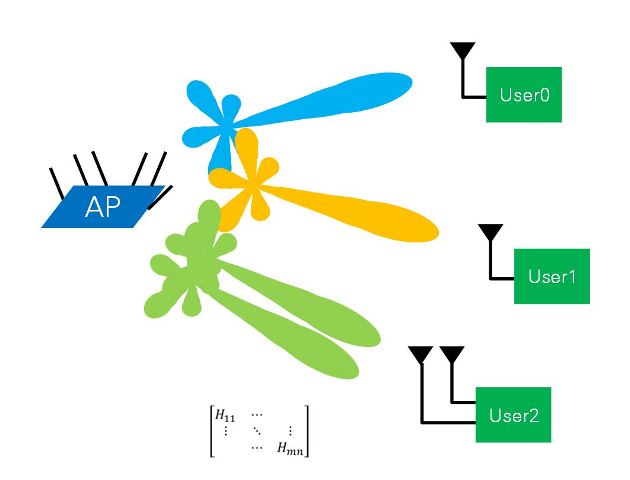
Fig. 1: AP using MU-MIMO beamforming to serve multiple users located in spatially diverse positions.
As a new feature in the MU-MIMO uplink direction, the AP will initiate a simultaneous uplink transmission from each of the STAs by means of a trigger frame. When the multiple users respond in unison with their own packets, the AP applies the channel matrix to the received beams and separates the information that each uplink beam contains. The AP may also initiate up-link multi-user transmissions to receive beamforming feedback information from all participating STAs (Fig. 2 ).
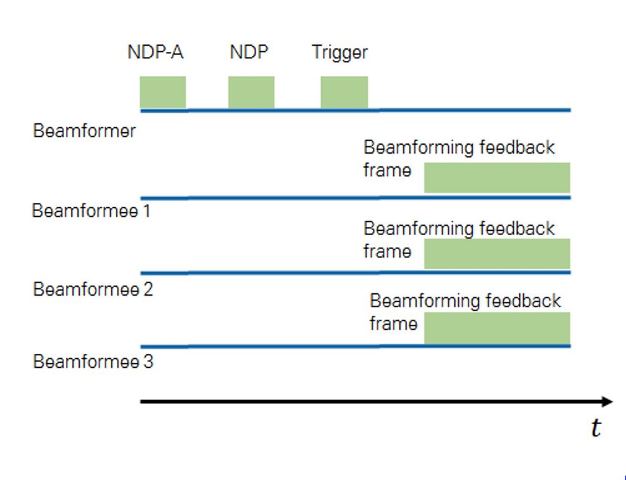
Fig. 2: A beamformer AP requesting channel information for MU-MIMO operation.
Multi-user OFDMA
Another technological implementation that 802.11ax adopts to serve more users in the same channel bandwidth is OFD- MA. Building on the existing orthogonal frequency-division multiplexing (OFDM) digital modulation scheme that 802.11ac already uses, the 802.11ax standard further assigns specific sets of subcarriers to individual users. That is, it divides the existing 802.11 channels (20, 40, 80 and 160 MHz wide) into smaller sub-channels with a predefined number of subcarriers. The 802.11ax standard calls the smallest sub-channel a Resource Unit (RU), with a minimum size of 26 subcarriers.
Based on multi-user traffic needs, the AP decides how to allocate the channel, always assigning all available RUs on the downlink. It may allocate the whole channel to only one user at a time — just as 802.11ac currently does — or it may partition it to serve multiple users simultaneously (Fig. 3 ).
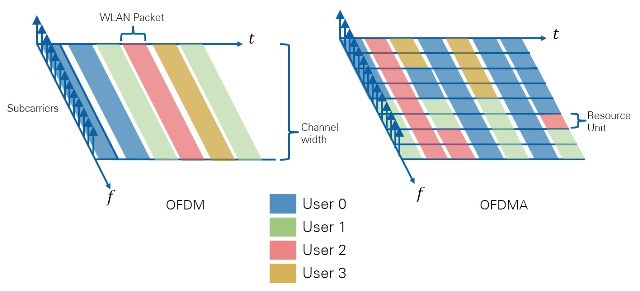
Fig. 3: A single user using the channel versus multiplexing various users in the same channel using OFDMA.
In dense user environments where many users would normally contend inefficiently for their turn to use the channel, this OFDMA mechanism now serves them simultaneously with a smaller — but dedicated — sub-channel, thus improving the average throughput per user. An 802.11ax system may multiplex the channel using different RU sizes (Fig. 4 ). Note that the smallest division of the channel accommodates up to nine users for every 20 MHz of bandwidth.
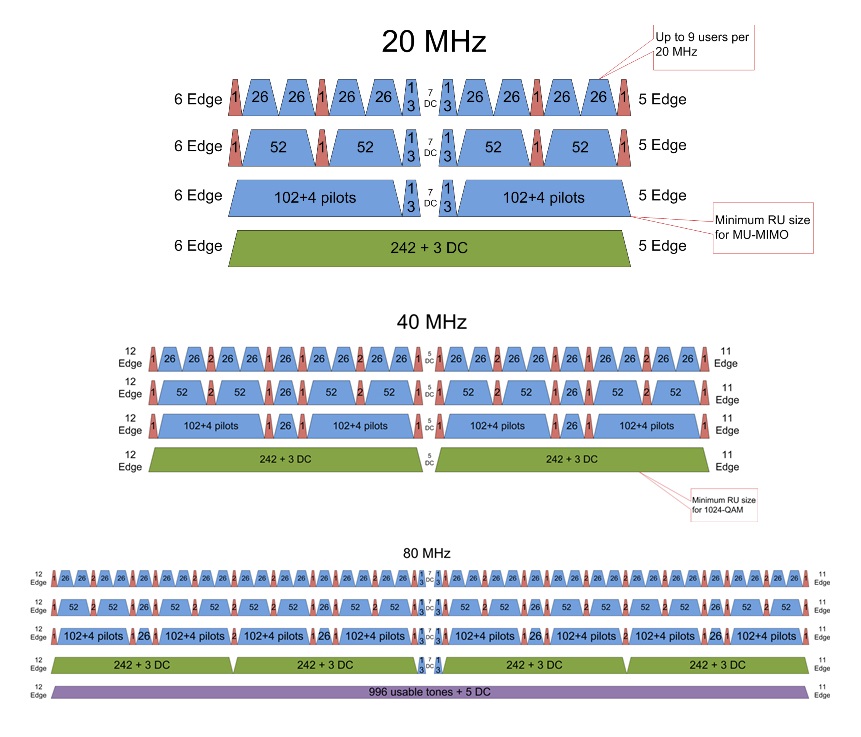
Fig. 4: Subdividing Wi-Fi channels using various RU sizes.
Table 1 shows the number of users that can now get frequency-multiplexed access when the 802.11ax AP and STAs coordinate for MU-OFDMA operation.
Table 1: Total number of RUs by channel bandwidth.
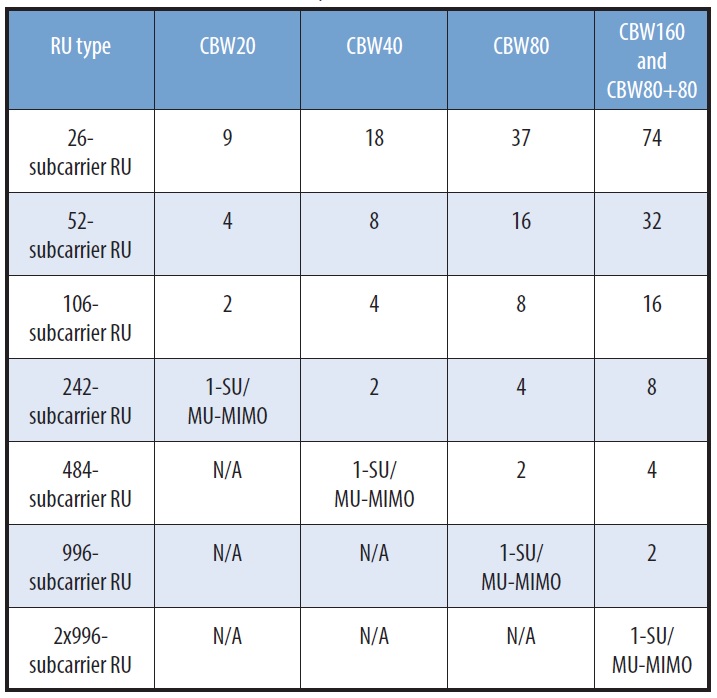
Multi-user uplink operation
To coordinate uplink MU-MIMO or uplink OFDMA trans- missions, the AP sends a trigger frame to all users. This frame indicates the number of spatial streams and/or the OFDMA allocations (frequency and RU sizes) of each user. It also contains power control information, such that individual users can increase or reduce their transmitted power, in an effort to equalize the power that the AP receives from all uplink users and improve reception of frames from nodes farther away. The AP also instructs all users when to start and stop transmitting. The AP sends a multi-user uplink trigger frame (Fig. 5) that indicates to all users the exact moment at which they all start transmitting and the exact duration of their frame to ensure that they all finish transmitting simultaneously as well. Once the AP receives the frames from all users, it sends them back a block ACK to finish the operation.
Fig. 5: Coordinating uplink multi-user operation.
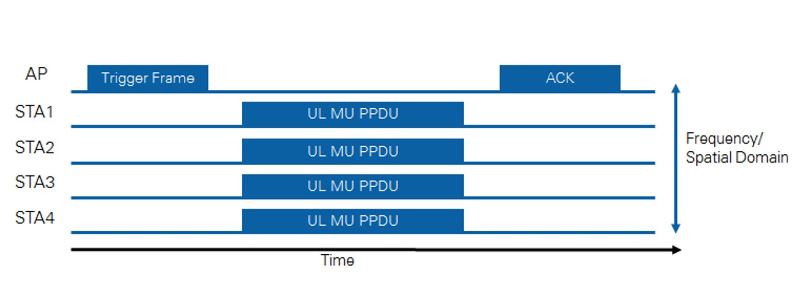
One of the main goals of the 802.11ax is to support a four-times-higher average per-user throughput in dense user environments. With that goal in mind, the standard designers have specified that 802.11ax devices support downlink and uplink MU-MIMO operation, MU-OFDMA operation, or both for an even larger number of simultaneous users. ☐
Advertisement
Learn more about National Instruments





